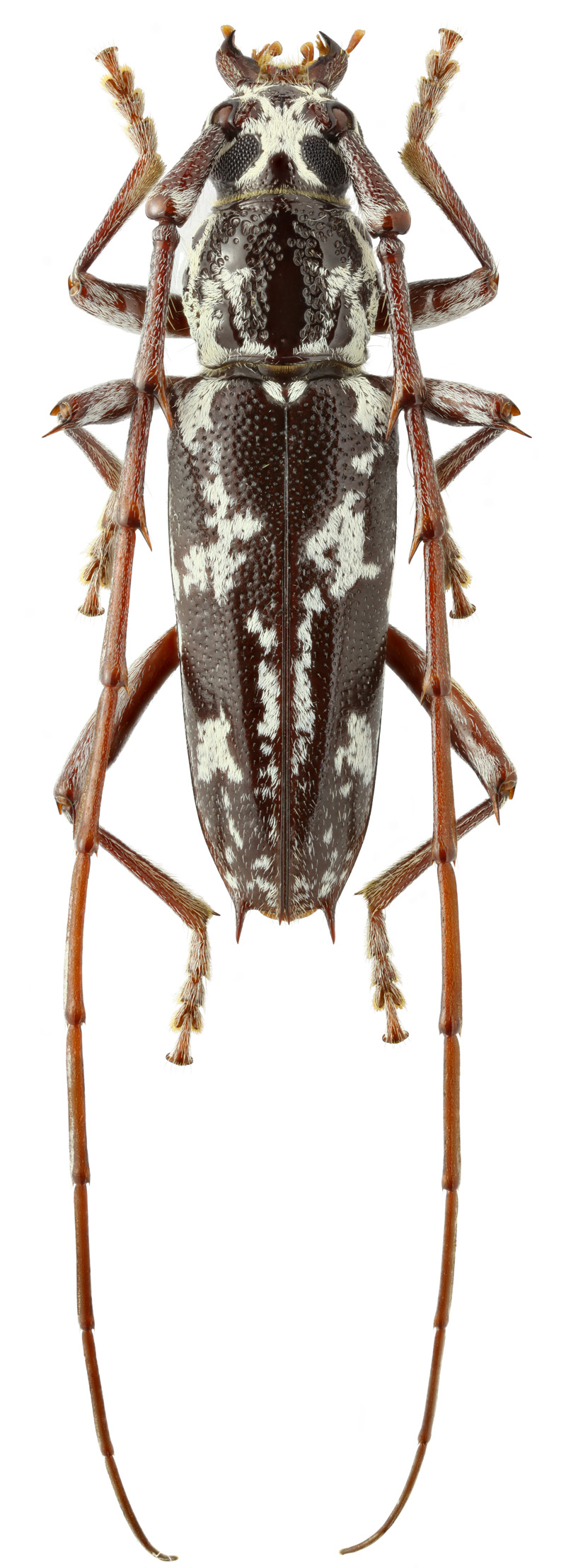| Author |
 Topic Topic  |
|
|
Max
Member Rosalia
  
Russia
713 Posts |
 Posted - 27/05/2019 : 22:24:39 Posted - 27/05/2019 : 22:24:39



|

411.32 KB
Elaphidion irroratum (Linnaeus, 1767)
Male, 18 mm.
Cuba, Matanzas prov., Trinidad env., 11.IV.2018 |
Edited by - Max on 24/07/2023 18:04:02 |
|
|
SDevesa
Member Purpuricenus
 
Spain
193 Posts |
 Posted - 23/07/2023 : 19:21:51 Posted - 23/07/2023 : 19:21:51



|
It is not quadrituberculatum.
The correct identification is Elaphidion irroratum (Linnaeus, 1767) |
 |
|
|
Max
Member Rosalia
  
Russia
713 Posts |
 Posted - 23/07/2023 : 20:05:09 Posted - 23/07/2023 : 20:05:09



|
| Yes You`re right probably. I had this idea too, but I was never sure. I'm not sure now either. Although, the idea is good. |
 |
|
|
SDevesa
Member Purpuricenus
 
Spain
193 Posts |
 Posted - 24/07/2023 : 09:45:17 Posted - 24/07/2023 : 09:45:17



|
The differences between E. irroratum and tuberculatum can be summarized as follows:
1. E. irroratum has a large white spot on the laterals of the pronotum, extending from the anterior to the posterior end. In E. quadrituberculicolle the whitish pubescence does NOT reach the upper edge.
2. In E. irroratum the whitish pubescence between the eyes is very abundant and has a "U", "Y" or "X" shape. In E. quadituberulatum this pubescence is scarce and is usually a small spot at the base of the antennae and another behind the dorsal lobe of the eye.
3. E. quadrituberculatum has antennomers III and IV bispinous, the outer spines being very small.
All these differences, including photos that show these details, can be seen in volume 1 of my book on the Longicorns de Cuba.
I have studied 283 specimens of irroratum and 31 of tuberculicolle. Your specimen is clearly and without any doubt a male of Elaphidion irroratum (Linnaeus, 1767). |
 |
|
|
Max
Member Rosalia
  
Russia
713 Posts |
 Posted - 24/07/2023 : 12:29:17 Posted - 24/07/2023 : 12:29:17



|
| Ok. Many thanks for explanations! I have male and female only, both from the same locality. |
 |
|
|
SDevesa
Member Purpuricenus
 
Spain
193 Posts |
 Posted - 24/07/2023 : 12:41:35 Posted - 24/07/2023 : 12:41:35



|
It is my pleasure.
Best regards
Sergio |
 |
|
|
SDevesa
Member Purpuricenus
 
Spain
193 Posts |
 Posted - 25/07/2023 : 09:25:46 Posted - 25/07/2023 : 09:25:46



|
It is my pleasure.
Best regards
Sergio |
 |
|
| |
 Topic Topic  |
|


